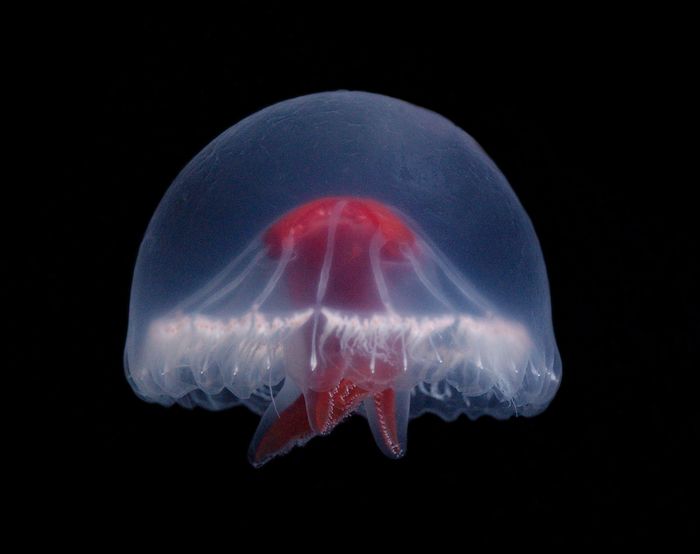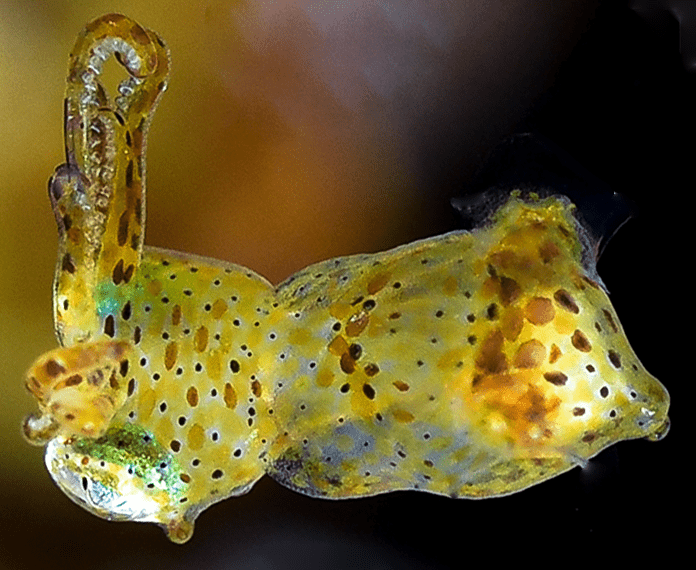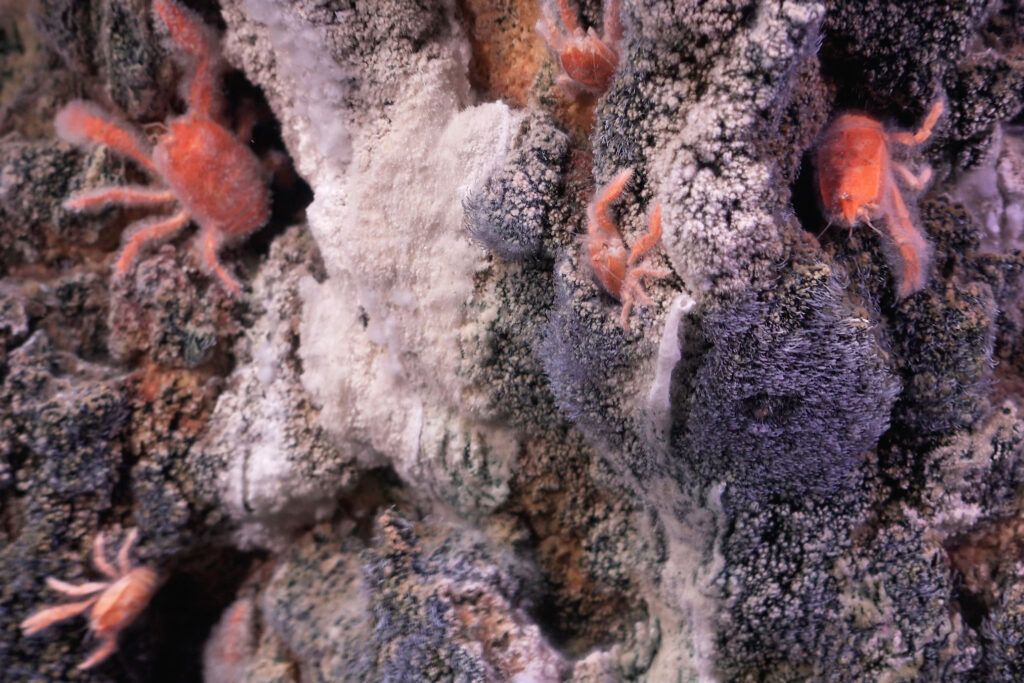
New species, the untapped potential of the oceans
91% of the species living in the oceans have yet to be discovered. Finding, sampling and studying species new to science is key to better understanding our planet and addressing challenges such as climate change, finding cures for diseases such as cancer or developing a more sustainable industry.

The oceans, great unknowns
The oceans occupy three quarters of our planet and hide countless undiscovered places: great underwater mountains and volcanoes, kelp and coral forests and deep abyssal plains. And, in the midst of this immensity, there hides a biodiversity that we do not know: it is estimated that 80% of the oceans' extension is unexplored and that 91% of the species that live in them have yet to be described.
"There is no doubt that the ocean is a great unknown and that much remains to be known at the scientific level. This is partly due to the inaccessibility of many marine environments. Reaching them involves very expensive means and numerous technical difficulties," explains Fernando Á. Fernández-Álvarez, postdoctoral researcher at the Institute of Marine Sciences (ICM-CSIC).
"Many sampling tasks are carried out through oceanographic campaigns in ecosystems that can be several days of navigation from the coast. These campaigns are complicated, because the space on the ships is limited, you have to plan very well and there may be adverse weather conditions. All this limits our ability to learn more about the sea," adds Fernández-Álvarez.
Despite the difficulties, about 2,000 new marine species are discovered every year, adding to the 245,000 already described and registered by the World Register of Marine Species (WoRMS). Species that open up a whole world of information and knowledge for science.

New species of the year
In 2023, new ones described include Abyssocladia falkor, a carnivorous sponge that has hook-like spicules to hold the small crustaceans it feeds on, and Santjordia pagesi, a jellyfish named after Saint George's Day (in catalan) because of the bright red cross on its body. "It has many different characteristics from other jellyfish, including the structure of its nearly 240 tentacles that lie underneath rather than on the edge of the bell," explain WoRMS.
Also, the Kodama jujutsu, a very small squid less than one centimeter long and nocturnal, can be found in the Indo-Pacific. It gets its name from the Kodama, Japanese mythological creatures that take care of nature, and from jiu-jitsu, a Japanese martial art.
"They are really fascinating animals. They have an adhesive gland on their back that allows them to attach themselves to substrates and go unnoticed by their predators and also by their prey," says Fernández-Álvarez. "I find the name they have given it very curious: the Kodama is a spirit whose presence is associated with the good health of the forests, just as the presence of this squid is associated with the health of the reefs in which it lives. In addition, this animal hunts by placing its arms in a very particular position, with several postures reminiscent of Japanese jiu-jitsu ", explains the researcher.

A world of possibilities
Currently, there are more people describing species than at any other time in history, which allows the number of discoveries to increase. We also have important technical innovations: a good example is the remotely operated vehicle(ROV), unmanned submersible vehicles equipped with state-of-the-art cameras that allow us to explore the deep sea and sample biodiversity much more easily.
"This innovation makes it possible to access spaces that, because they are less accessible, are often more unknown. An extreme example would be deep-sea habitats, which have only been explored with specially equipped ships for 150 years, or hydrothermal vents, which have been studied using submersible vehicles for half a century," explains Fernández-Álvarez.
Just this year, between February and April 2024, a series of expeditions led by the Schmidt Ocean Institute of the United States in the South Pacific (in the little-explored waters stretching from the coasts of Chile to Easter Island) have found dozens of species that may be unknown to science. Among them, different types of corals, sponges, mollusks and crabs.
However, finding and describing new species is not easy. First of all, there is the difficulty of the process itself, added to which are the problems of finding funding and bureaucratic hurdles. Currently, and according to Fernández-Álvarez, the average time that passes from the time a first individual is found until it is described is about 13 and a half years.
"It is necessary to carry out many studies, compare specimens from different sources and have an encyclopedic knowledge of the literature. In addition, it is often difficult to differentiate these individuals from other previously described species, so synonyms are inadvertently generated whose status needs to be resolved later," explains Fernández-Álvarez.
Citizen science is particularly important in the description of new species at present. According to Fernández-Álvarez, more than half (57 %) of the species described between 2000 and 2014 were discovered by people who did not perform this activity as part of their work. For example, by retired academics or amateur scientists.

From medicine to food: practical applications of these new species
Knowing the biodiversity of our planet, even that of the most remote and inaccessible habitats, is important for many reasons. First, there is the value of scientific knowledge itself. "Personally, as a scientist, I consider that knowledge is already enough value to justify the effort involved in discovering and naming new species," says Fernández-Álvarez, adding that this knowledge can help us find tools to survive the challenges of today's world.
One of these challenges is climate change. Many aquatic ecosystems have the capacity, for example, to capture and store large amounts of carbon. Another major challenge is posed by the biodiversity crisis. "There is no doubt that, in order to know what our impact on the Earth is, we must be able to characterize what was in each place and what is changing. Only then will we be able to predict where the change is going," explains the researcher.
According to the ICM-CSIC researcher, the species found by the Schmidt Ocean Institute can be used to demonstrate the biological richness of these unknown and unexplored regions, and thus put pressure on governments to protect them. "It may seem to many people that protecting regions far from the coast does not have a great effect on their lives, but all the Earth's ecosystems are connected to each other, so if one species disappears, the effects can be unpredictable," explains the researcher.
The discovery of new species can also lead to the development of new solutions within the field of blue or marine biotechnology, which uses aquatic biology to obtain new foods, medicines, foods, cosmetics, biofuels or solutions to environmental problems.
One sector in which these aquatic resources show great potential is medicine. The first antitumor drug developed in Spain, called Yondelis and designed by PharmaMar, is based on a synthetic compound obtained from the ecteinascidia turbinata, a colonial ascidian that lives in shallow waters of the Caribbean and Mediterranean Seas. And this is just one of many examples.

The role of ports in the study of new species
Ports play a very important role in the description of new organisms, because they are places where numerous species, both autochthonous and allochthonous, live. In addition, they are very accessible spaces, located on the coasts, which facilitates their collection and study.
"Nor can we forget the long tradition of collaboration that exists between professional fishermen and academics, a collaboration that can often lead to the description of a new species," says Fernández-Álvarez. "For example, at the ICM we have the typical series of Opisthoteuthis calypso, a species described from fishing discards."
"We also have another cephalopod recently described in the Barcelona area: Sepiola bursadhaesa. This species has been described from nine specimens from the Barcelona fish market in the 1930s that were deposited in the National Museum of Natural History in Madrid," he adds.
This relationship between fishermen and researchers continues today, allowing the work of fishermen to be reflected in that of scientists. "I myself buy animals from fishermen that I then use as samples," says the ICM-CSIC researcher. "Without a doubt, the ports are an important source for academics to work with.



